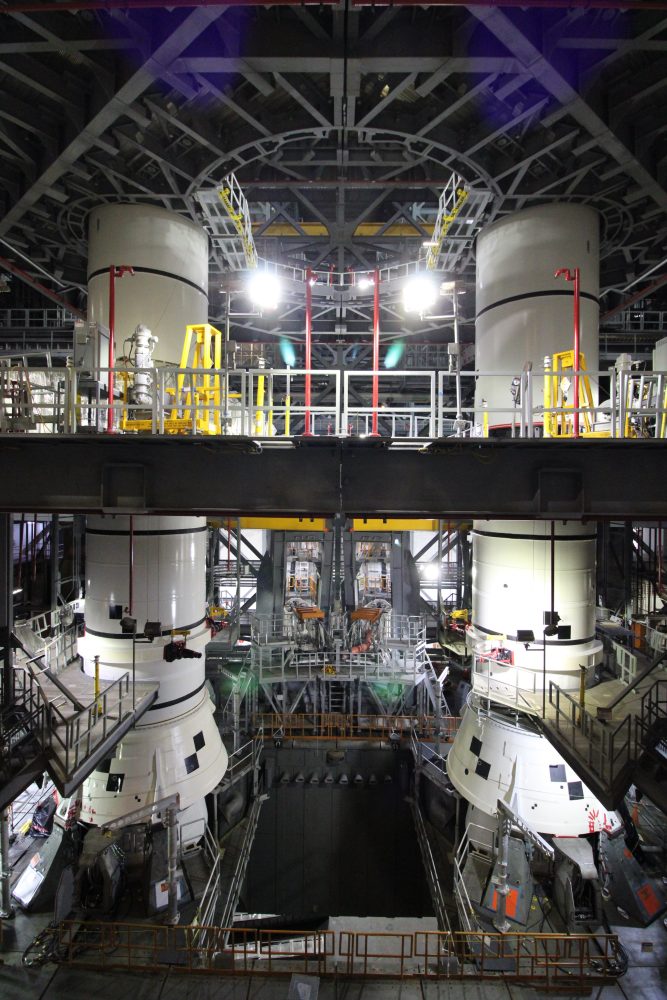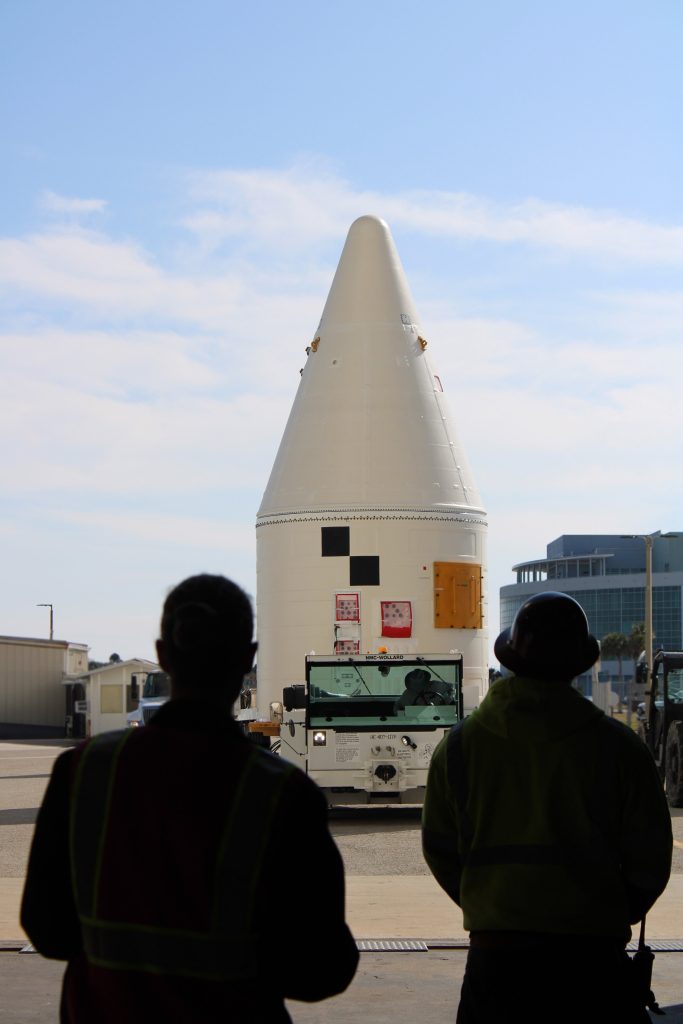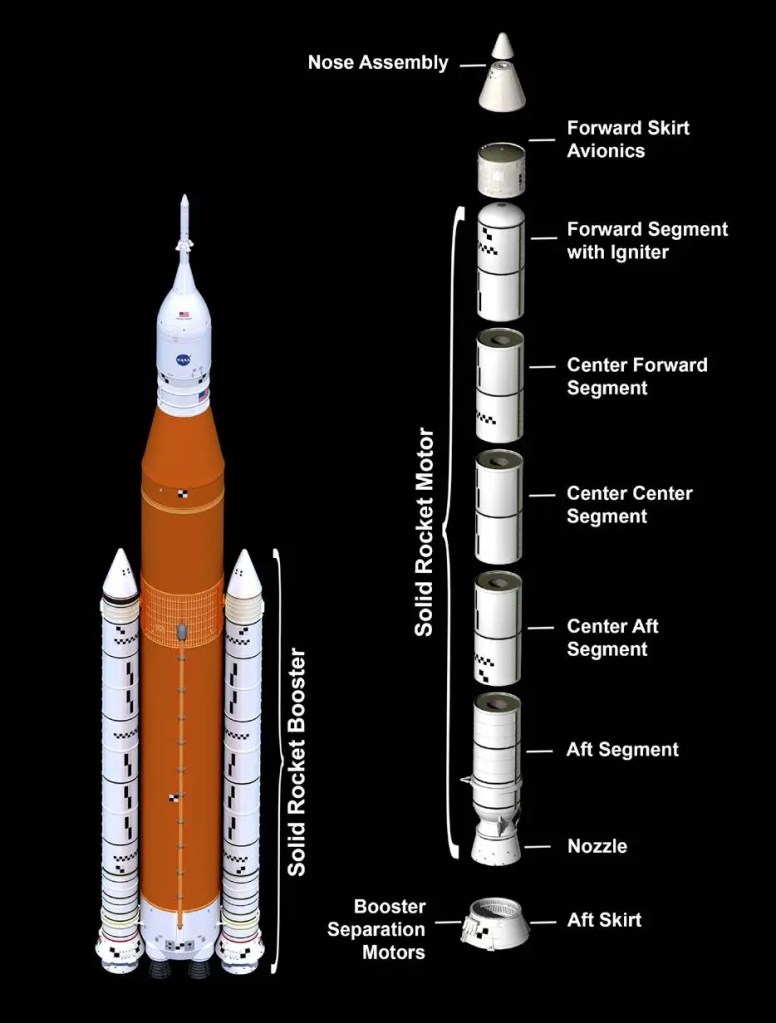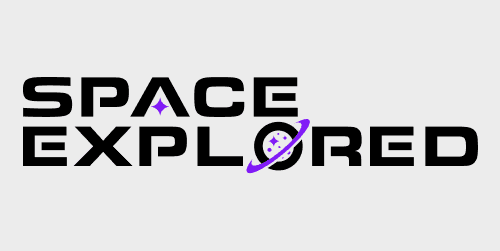
NASA continues to get the rocket that will launch the crew of Artemis 2 to the Moon ready before the end of the year. The Exploration Ground Systems (EGS) is continuing work on stacking the Space Launch System‘s solid rocket boosters. Teams have stacked four segments, two per booster, inside the Vehicle Assembly Building. Next, NASA contractors will stack the center segments, forward-center segments, and forward segments before topping them with nose cones. Nose cones which NASA recently moved into the Vehicle Assembly Building. In all, NASA has eight more booster components to stack before finishing integration.
NASA faces a time crunch, with certification deadlines approaching. Each booster has a 12-month certification period that begins once the first two segments stack. The team stacked the first two segments on December 19, 2024. With the new segment stacked, the clock is ticking for the right booster. The left booster’s certification expires around December 2025, while the right booster’s expires around January 2026.
NASA could extend each booster’s certification period with a waiver. This waiver would allow NASA to continue using the boosters under an extended certification. NASA was granted a similar waiver for Artemis 1, where boosters were stacked for 23 months. To obtain the waiver, NASA must inspect the boosters and confirm that all critical hardware is within tolerance and poses no safety risks. If the waiver is not granted, NASA may need to destack the booster for repairs, replacements, or additional tests.


What’s next for Artemis 2?
Meanwhile, the core stage continues processing in high bay 2 of the Vehicle Assembly Building. Technicians can fully access the core stage in this processing cell to inspect, test, and adjust it. Once the boosters are stacked, the core stage will be moved to high bay 3 for integration.
Once the core stage is in place, the team will stack the Launch Vehicle Stage Adapter (LVSA), which bridges the gap between the core stage’s 27.6-foot (8.4-meter) diameter and the Interim Cryogenic Propulsion Stage’s (ICPS) 16.7-foot (5.1-meter) diameter. The ICPS will then stack next.
After the ICPS, the Orion spacecraft adapter will stack, bridging the size difference between the ICPS and the slightly larger Orion spacecraft. Finally, the Orion spacecraft will be added when it’s ready.
Can NASA meet the deadline?
NASA must make adjustments with the boosters’ certifications expiring before the April 2026 launch target. NASA could choose to renew the certifications at the end of this year. However, this raises the question: Why rush the stacking process if such issues are inevitable?
To understand this, we must consider other mission elements. The biggest risk for Artemis 2 lies with Orion. After many months of tests and investigations, NASA recently announced its decision on Orion’s heat shield.
NASA has resumed integrating Orion’s hardware. The next steps include installing Orion’s four solar arrays, fueling the spacecraft with propellant, and adding the service module fairings. The team will then install the Launch Abort System covers and motor.
Throughout these steps, NASA will conduct tests to ensure system functionality. Artemis 2 will mark Orion’s first crewed flight and NASA’s first crewed test of a new vehicle since STS-1 in 1981. It will also be the first crewed spacecraft to test its systems while sending humans to the Moon.
Orion will experience many firsts during integration. For example, the Launch Abort System will be fully functional for the first time. During Exploration Flight Test-1 (EFT-1) in 2014 and Artemis 1, the abort system was partially functional. The jettison motors were live, but the abort motors that pull Orion from a failing rocket were inactive.
Assuming EGS overcomes testing hurdles, Orion could be ready by the end of the year. For context, Artemis 1’s solar panels were installed in September 2020, and Orion arrived at the Vehicle Assembly Building in October 2021, 13 months later. However, Orion’s Artemis 1 timeline was delayed by the prolonged Green Run campaign for the SLS core stage.
If Orion is ready in 10 months, it could arrive between October and November 2025. This would likely require a booster certification waiver unless EGS can dramatically advance its schedule.
SLS’ Rapid Pace
Based on NASA’s current high speed, it’s likely NASA wants to have the SLS portion of the mission tested and verified before stacking the Orion spacecraft. Meaning we could see a fully stacked SLS, minus Orion, roll to the pad and undergo its Wet Dress Rehearsal (WDR) by this summer.
This WDR would be the same as Artemis 1’s. To fill the fuel tanks on the SLS core stage and ICPS upper stage. Then proceed through a simulated countdown to just before the simulated ignition of the core stage’s engines. Artemis 2 is not planned to have a test fire. Artemis 1 underwent a lengthy Green Run at the Stennis Space Center which included firing its engines. Artemis 2’s core stage will only be filled with fuel, and systems primed to simulate a launch. Presently there are no plans to fire Artemis 2’s engines before launch.
The WDR process posed some issues for Artemis 1 resulting in multiple scrubs and failures. On NASA’s third attempt, they managed to complete Artemis 1’s WDR. Experiencing sensor issues on one of Artemis 1’s RS-25 engines as well as multiple leaks in multiple areas of the Mobile Launchpad’s fuel umbilical system, resulting in gaseous hydrogen violating NASA’s safety limits. This issue famously led to NASA deploying their Red Team to the pad to perform a fix, which helped enable NASA’s launch of Artemis 1. Space Explored was fortunate enough to interview these individuals.
By rolling out in advance without Orion, NASA could test fixes they’ve implemented since Artemis 1. Seeing if these solutions work. If they don’t, NASA will have more time to focus on the vehicle and test other solutions before stacking Orion.
This approach would allow NASA and EGS to simultaneously work on tests and milestones for both Orion and SLS. Together, these would enable a faster approach to achieving (or advancing) Artemis 2’s launch date.
FTC: We use income earning auto affiliate links. More.




Comments